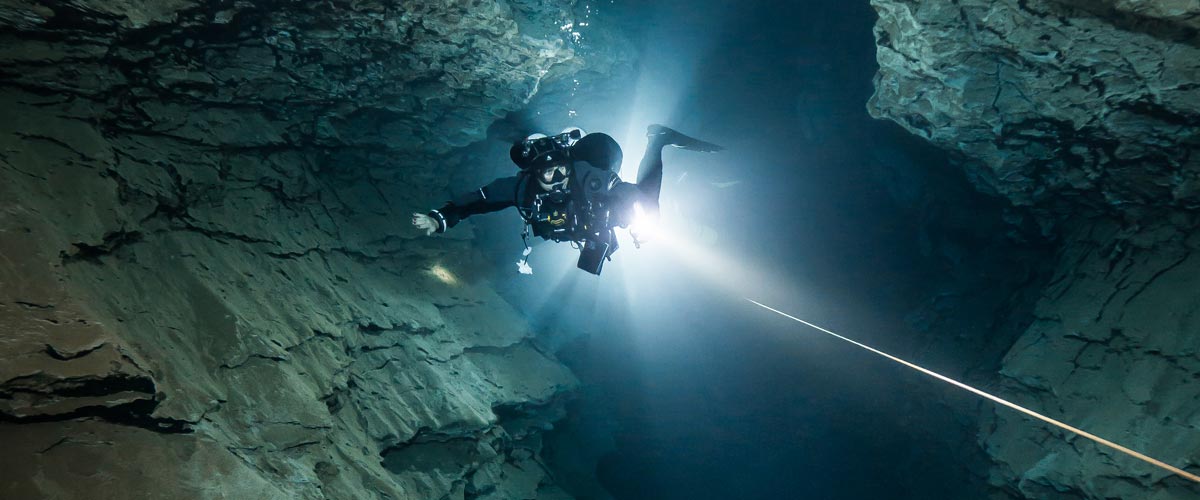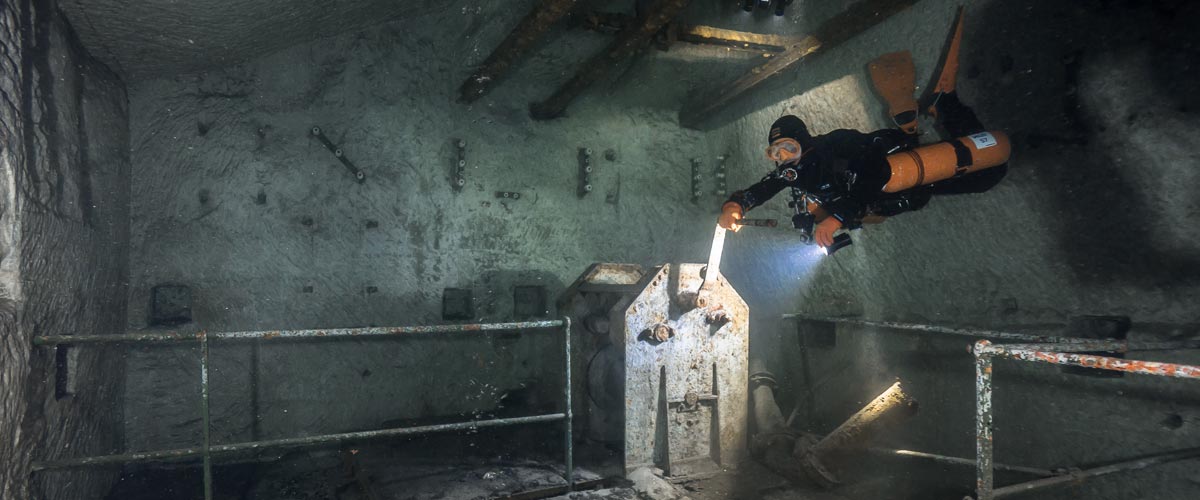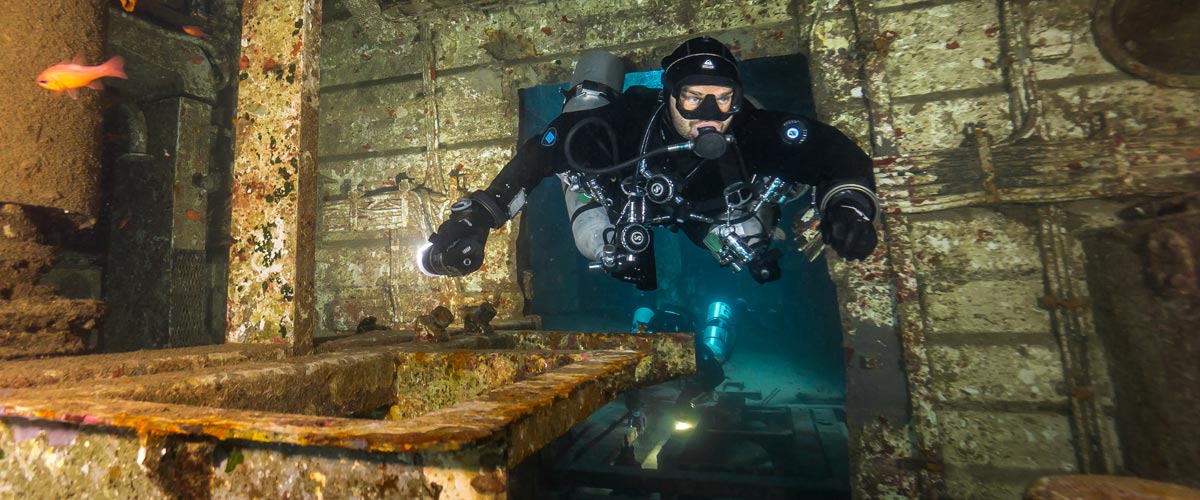Dive Training Blogs
Scuba Poker: A navigational training exercise
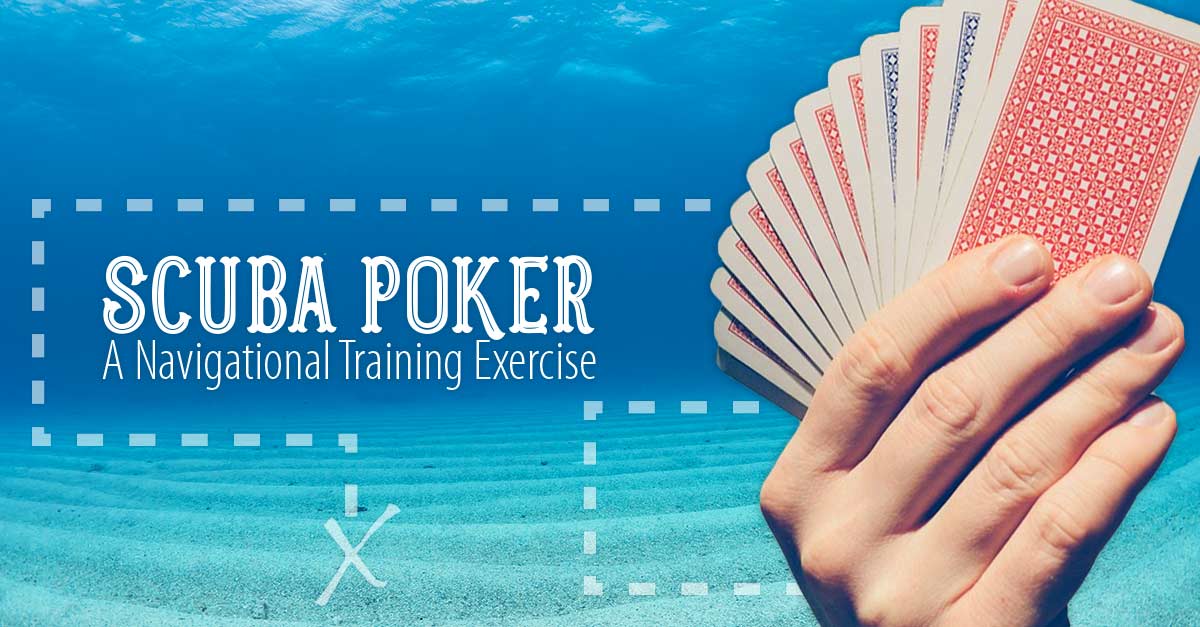
By Jeff Bozanic
In most scuba courses, underwater navigation using a compass is generally one of the least enjoyable activities that a diving student will be exposed to. Yet, with a little preparation and equipment, this drill can be turned into an exercise that the students will both enjoy and remember for a long time to come. That is the purpose of “Scuba Poker.”
“Scuba Poker”
To play, the students are sent out in buddy pairs to swim an underwater compass course. They are given the bearings of the course prior to beginning the dive, which they write down on their slates. They then swim the course while submerged. Each leg of the course terminates at a downline. Clipped to the downline are clothes pins. Each buddy team takes one clip from the line, and proceeds to swim the next leg of the compass course.
The buddy teams must remain underwater the entire time. If they get lost, the must run a reciprocal course to get back to the last station, and begin anew. If they must surface, they forfeit the opportunity to collect any further clothes pins, and must swim back to the dive entry point. Normally, once the teams have visited each station, they return to shore underwater as well.
Typically, the course consists of seven legs
Thus, if all goes well, each buddy team should return with seven clothes pins. Each pin is numbered. After the teams have unsuited, they exchange their clothes pins for the playing card that corresponds to the number on the pin. They then select the best five card hand from the cards which they hold.
The team holding the best hand is awarded a prize. I generally give each of the winning members a set of dive tables, a logbook, or similar reward.
The exercise teaches or reinforces a variety of skills. The compass is used to swim a variety of directions, not just out and back on a reciprocal course. It also reinforces buddy cooperation, slate use, and manipulation of objects while on scuba.
Preparation is the key to running this exercise
All of the materials should be assembled in advance. Weights, downlines, and surface floats are needed for each of the seven navigational stations. 52 clothes pins or similar clips must be pre-numbered (or 54 pins if jokers are to be used as wildcards). Each number should be assigned a playing card. The easiest way to do this is to shuffle a deck of cards, assigning each consecutive card a number. Besides the list of numbers, a deck of playing cards and the prizes will be needed on the surface. Besides their standard open water diving gear, each buddy team will need a compass, a slate and pencil, and goody bag to place clips into.
Before the students arrive at the dive site, the instructor should set up the course. The positions of the dive lines must be placed far enough apart so that the following endpoint is not visible from the starting point of the leg. The further apart the stations are, the more challenging the course will be. A flat sand bottom with poor to mediocre visibility works well for this exercise, enabling almost any beach or lake to be used. If there is a current at the dive site, the legs should be shortened, or the students taught to compensate for drift.
Make sure to review compass use
Use of the compass should be reviewed with the students prior to the dive. And a complete dive briefing is necessary to explain the rules, as well as contingency plans for the dive (what to do should a buddy pair become separated underwater, etc.) Of course, normal dive briefing and buddy checking tasks should be accomplished as well.
The teams should be sent out in pairs at five-minute intervals. This prevents one group from following another instead of using their compass. Sending the teams out on their own also strengthens the weaning process, increasing their self-reliance instead of depending on the instructor. I have generally used this exercise for my Open water II and Advanced classes, since these individuals are already certified, and qualified to dive on their own (as long as the conditions approximate those they have been diving in before.)
Several variations of the game are possible
As in poker, certain cards may be declared “wild cards.” Alternatively, clothespins of different colors may be used, with the divers only allowed to collect on pin of any given color. The course may also be run as a timed exercise, with a time limit set for getting back to the beach. If the buddy pair does not return within an allotted time, their hand is disqualified (unless none of the teams make it back in time.) This bolsters an awareness on time in the divers, which is an important skill for advanced diving activities. Running the exercise in this manner has been especially successful with Advanced classes.
These are but a few of the alternatives for running Scuba Poker. Regardless of how it is conducted, however, you will find that its use increases the enjoyment of both the students and the instructor by providing additional objectives and amusement.
To find out more about International Training, visit www.tdisdi.com.

Blogs
Intro to Tech: What is it about?
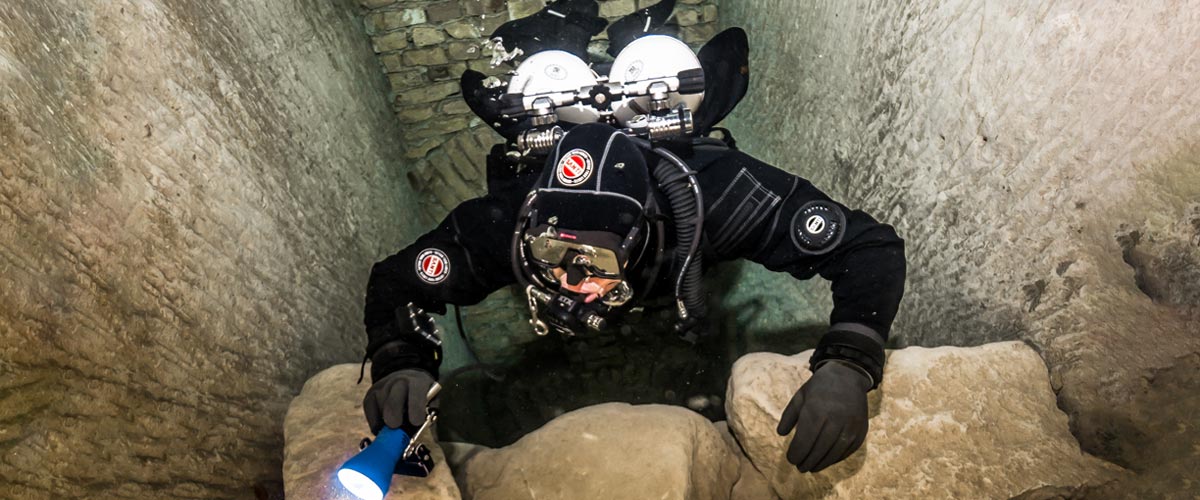
Article by José Pablo Mir
Pictures by Cezary Abramowski
The world of technical diving is exciting. It opens the door to new sites, depths, and bottom times. More importantly, it opens our minds to a new way of planning, facing, and experiencing dives, even those not purely technical.
Becoming a technical diver is a process, and like in other aspects of life, we should find the proper entry point that suits us best based on our knowledge and experience. The Introduction to Technical Diving course from TDI -the world’s largest and most recognized technical diving teaching organization- is the best option for divers who have yet to gain experience in the fundamental aspects of this new practice. The course’s content and its embrace of new techniques and technologies make it possible to acquire a solid foundation to learn and gain experience in this practice properly.
Becoming a technical diver is not something that happens overnight, whether deciding to become one or receiving a certification card stating we are now technical divers. It is a slow process extending farther away than any introductory course. It requires effort and dedication. But it will bring us satisfaction from day one -or two.
It is a matter of mentality
First, we must understand and accept that technical diving, involving greater depths, longer bottom times, exotic gases, virtual or real ceilings, and more, comes with higher levels of risk than the sport diving we have been practicing until now.
Although this discussion usually starts with a warning about risks, as I’ve done in the previous sentence, our practice is not a game of chance.
Technical diving is a rational activity that requires maturity and good judgment, and we will put everything into ensuring that each dive is a successful one -meaning we return from it safe and sound. With this understanding, we will strive to establish a mental attitude more aligned with our practice and its realities.
This new “technical diver” mindset we will develop will lead us to be more cautious in our executions, more analytical in our plans, more rational in our strategies, and more detailed in our procedures.
Experience will keep teaching us to know ourselves better, to keep our anxiety and other emotions under control, and to manage our impulses. Over time, our senses will sharpen, and we will be more attentive to the particulars of the situation we find ourselves in.
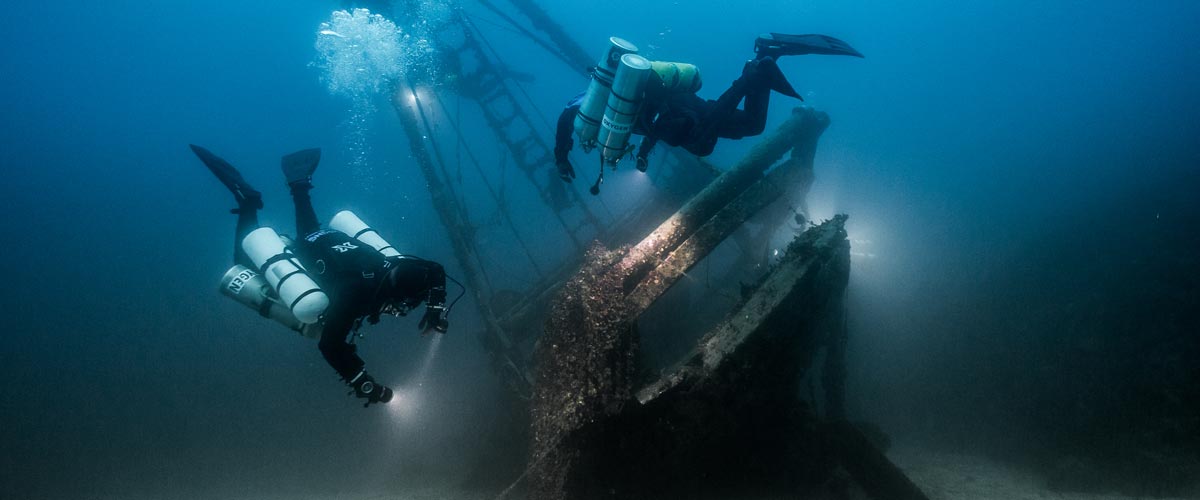
Strategies and procedures
Our strategies, those broad guiding lines tracing the path to follow, from how to approach planning to where, with what, and how we are willing to get there, will be more specific and more practical. Not because they magically become so, but because we will consciously and deliberately frame them that way.
We will establish clear, concise, and realistic procedures. Not only for the undesirable situations that may present themselves but also for those that are part of our dive objectives.
Even though, as technical divers, we often use equipment different from what we were previously accustomed to, it is essential to note that the gear does not make the diver. In a way, we could consider such equipment as the necessary tools to implement what our goal seeks to achieve, according to our strategies and procedures.
Technique plays an important role
We must put our greatest effort into learning and perfecting the different techniques we will be acquiring. Buoyancy, trim, propulsion, cylinder handling, deploying DSMBs and lift bags, valve drills, and more are essential skills we must begin to master to progress in our art. What we cannot do, when we need to do it, can harm us.
Our techniques must be effective and achieve the purpose for which they were devised. But they must also be efficient and require the least resources possible, including the time they take and the effort they demand. Effectiveness and efficiency will prevail over beauty and other considerations that may come to mind, although none of them should be mutually exclusive. A technique executed efficiently and effectively tends to have an inherent beauty.
Refining techniques is a lifelong mission. Some of them will be easy to master from the go; others, on the other hand, will be our life mission and will require many repetitions just to resemble the idea we have in mind of how they should be executed.
We must consider the environment
Our learning, the needs and musts of the practice we engage in, the experience we gradually gain, our strategies and procedures, and even our equipment and tools change with the environment.
Diving in the ocean, everything about us must be suitable for ocean dives. Conditions there rarely emulate those found in a pool, lake, or river. Variable winds and currents, greater depths, visibility conditions, other divers with uncertain skills around us, marine life, maritime traffic, distance from the coast, and many other factors add complexity and uncertainty.
It is never necessary to master the pool on the first day, but planning and aspiring to gradually cope with the ocean’s conditions is essential.
The cost of good training
We are aware that our resources are often scarce in relation to the possibilities of use we could give them if they were not. To a greater or lesser extent, we are part of the economic reality in which we are embedded.
Fortunately, the cost of good technical diver training is not an entry barrier. Comparing training and equipment costs, we see that the former are generally lower. Yes, lower cost for personalized service, essential to our future
performance and safety, than for a series of mass-produced products that are mere, albeit necessary, tools for an end.
The value of good training
The value of the training we received encompasses a range of characteristics, from emotional and methodological to technical and technological. TDI and its Introduction to Technical Diving course offer a deep and modern approach, with a teaching strategy that aims to create thinking divers, not merely obedient ones.
As technical divers, our knowledge is our primary tool. In this type of activity, what we don’t know can harm us.
Is this course optional?
Unfortunately, the fact that this Introduction to Technical Diving course is not a prerequisite for any subsequent training is an invitation to consider it optional. And we all know what usually happens to “optional” under budget constraints.
However, this course should be seen as optional only by those divers who are somehow familiar with the use of technical equipment, who have a mindset more in line with the requirements of this type of diving, who plan and execute the dives the proper “technical” way, who know their gas consumption rate, who are not intimidated by non-decompression tables, who feel comfortable using their dive computers, and know the techniques and have at least an acceptable level of buoyancy, positioning, and propulsion. Those can go straight to a more advanced training course, such as TDI’s Advanced Nitrox.
We must ask ourselves whether or not we are in that group.
Remember our goal: to have fun
Recreational diving is our passion. Jumping into the water carrying heavy equipment and having properly dotted our I’s and crossed our T’s have only one ultimate goal: fun. This is the activity we have chosen as a hobby. We must enjoy it; it must give us pleasure and make us vibrate.
Having a good time is not optional!
Blogs
Four opportunities to go pro in 2024 with Dive Friends Bonaire
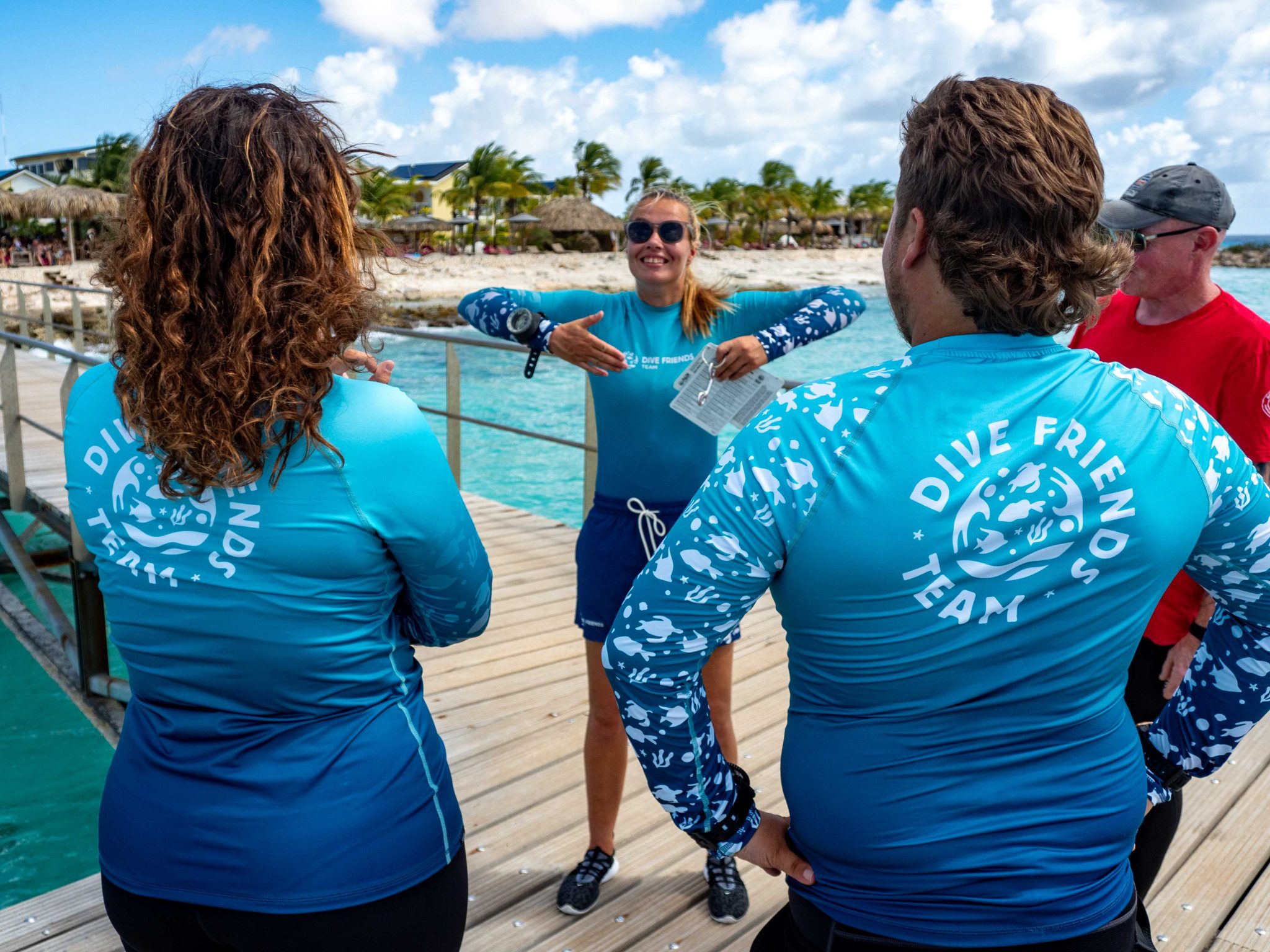
Dive Friends teaches the Instructor Development Course (IDC) several times a year to students who are eager to share their passion for diving with the world.
Dive Friends is known for the personal approach throughout the course. Their in-house course director will lead the students through every essential step, mentoring them to achieve their fullest potential as a dive instructor.
Applications for the following IDC start dates are now open:
- 12 April
- 5 July,
- 20 September
- 29 November
Partnership with Casita Palma
If the student opts for the IDC-Deluxe or IDC-Supreme package, their accommodation will be arranged for them at Casita Palma. This small and quiet resort is within walking distance from Dive Friends Bonaire’s main dive shop location and has everything you need to relax after an intense day of IDC training. Breakfast is included, so the student will always be fuelled and ready for their day.
Contact Dive Friends Bonaire’s Course Director Eddy for more information: coursedirector@divefriendsbonaire.com.
-

 News3 months ago
News3 months agoHone your underwater photography skills with Alphamarine Photography at Red Sea Diving Safari in March
-

 News2 months ago
News2 months agoCapturing Critters in Lembeh Underwater Photography Workshop 2024: Event Roundup
-

 Marine Life & Conservation Blogs2 months ago
Marine Life & Conservation Blogs2 months agoCreature Feature: Swell Sharks
-

 Blogs2 months ago
Blogs2 months agoMurex Resorts: Passport to Paradise!
-

 Blogs2 months ago
Blogs2 months agoDiver Discovering Whale Skeletons Beneath Ice Judged World’s Best Underwater Photograph
-

 Gear News3 months ago
Gear News3 months agoBare X-Mission Drysuit: Ideal for Both Technical and Recreational Divers
-

 Gear Reviews2 months ago
Gear Reviews2 months agoGear Review: Oceanic+ Dive Housing for iPhone
-

 Marine Life & Conservation2 months ago
Marine Life & Conservation2 months agoSave the Manatee Club launches brand new webcams at Silver Springs State Park, Florida













